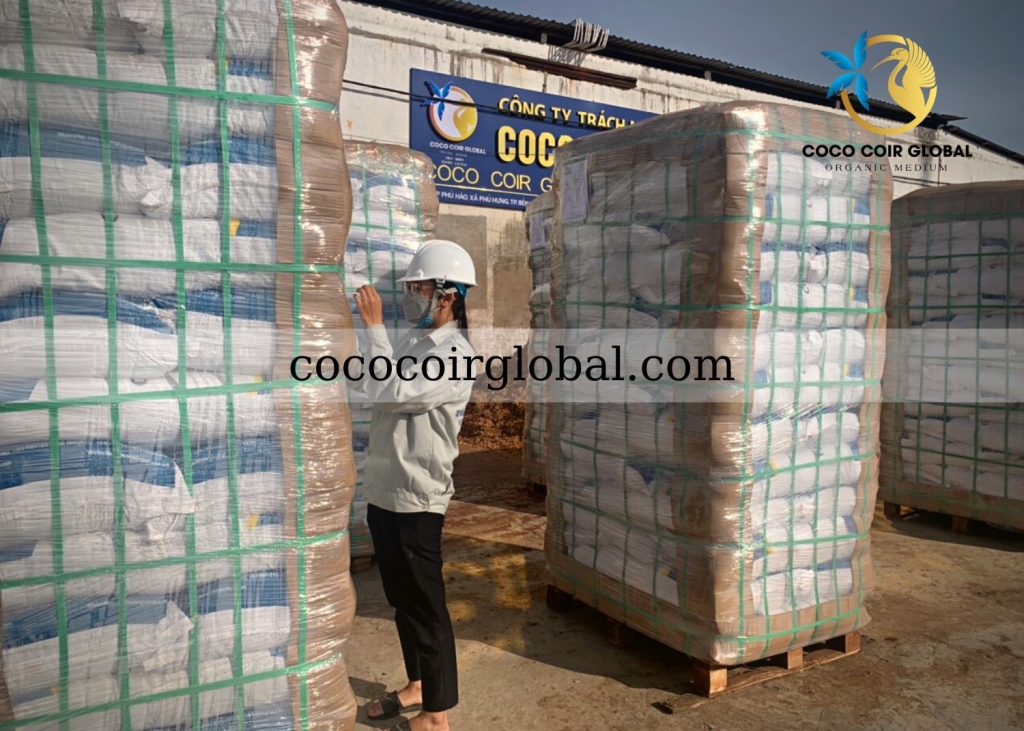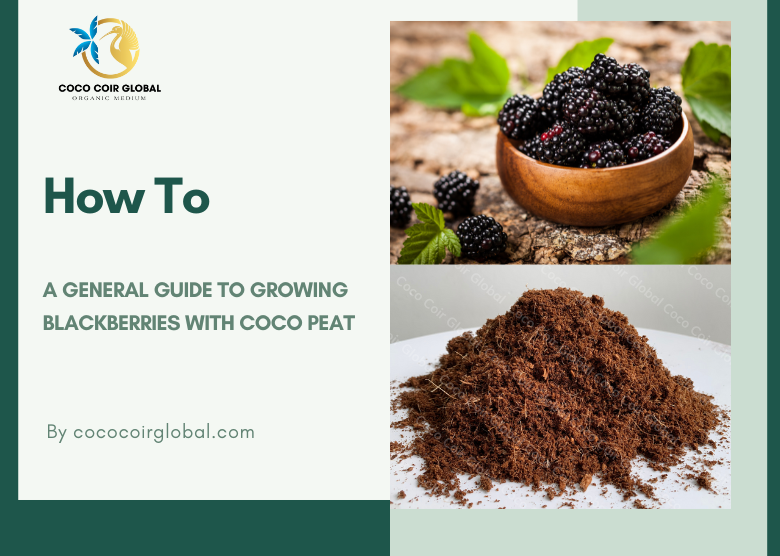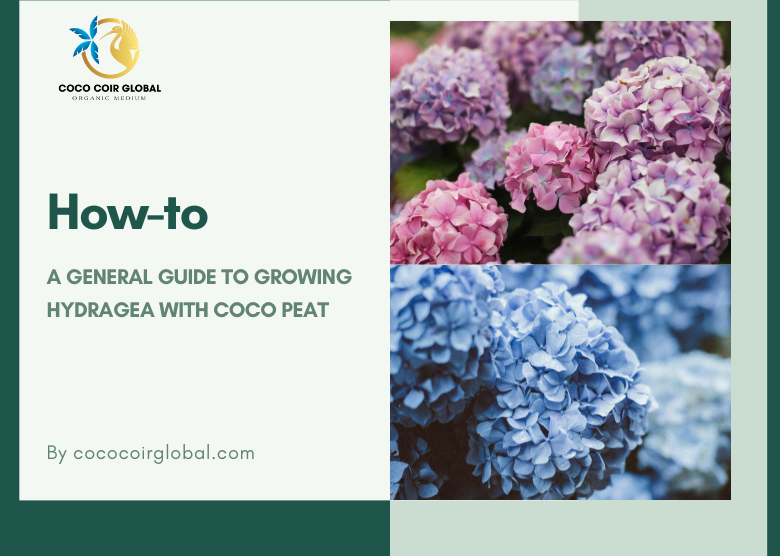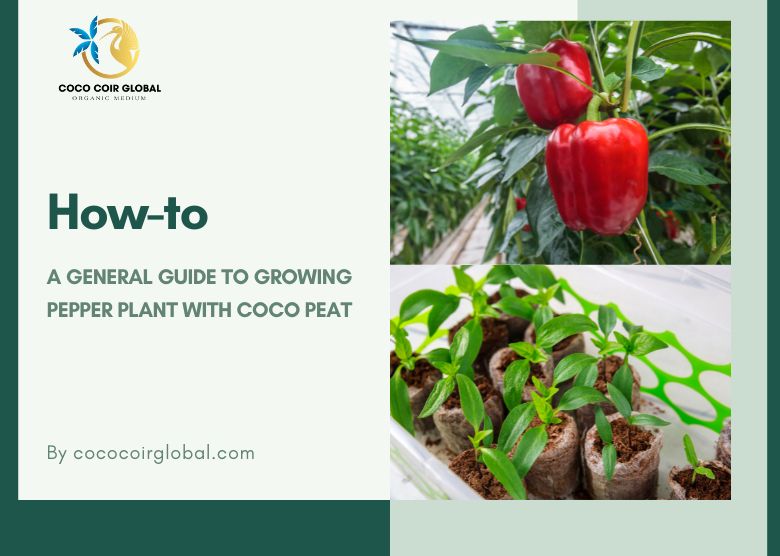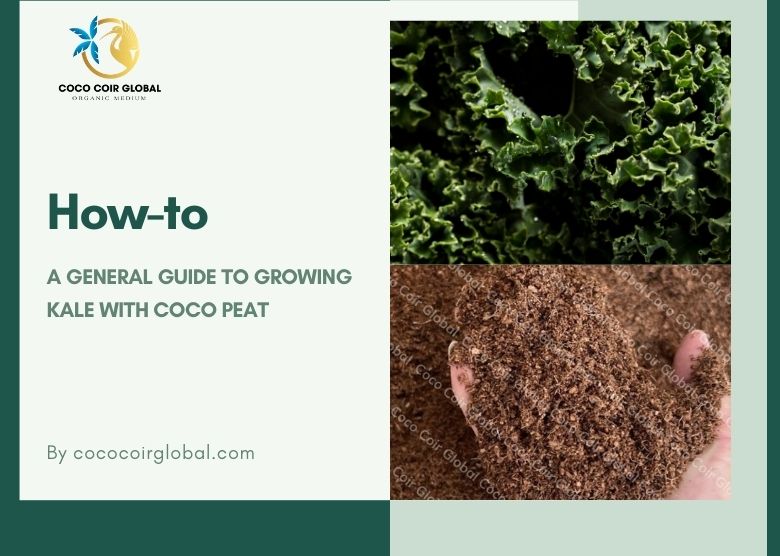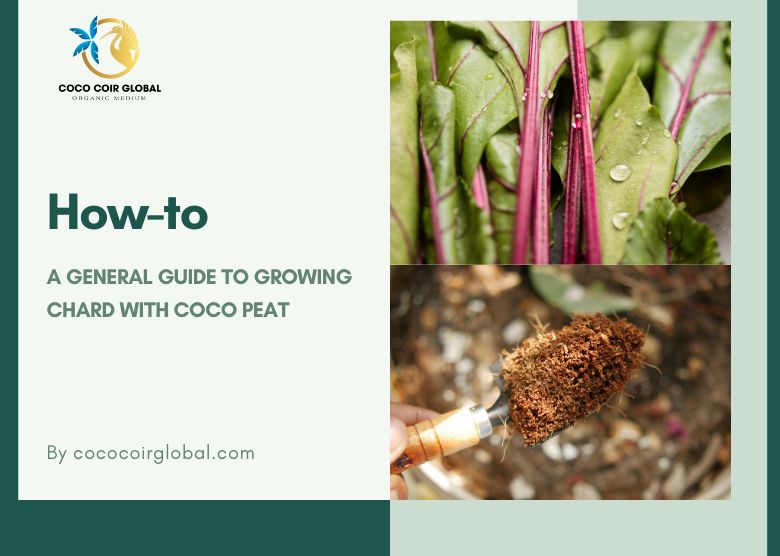What is Coco Coir?
Once considered a waste product of the consumable coconut product industry, the empty coconut husks are usually dumped into swarms to get rid of. As the discovery of coco coir and its popularity is growing rapidly, the amount of husks being dumped go down gradually. They are collected, processed (through multiple processes) and then made into either coco peat, coco fiber, or coco chips, which then are mixed in different ratios to make coco coir that fit into different purposes.
Useing of Growing Vegetables in Coco Coir
You have two options when using coco coir: use it as the sole soil or blend it with your preferred potting mix. For creating a seed starting mix for small seeds, fine pith coco coir works best. Thanks to its water retention capacity, coco requires less frequent watering for seeds compared to regular soil.
Highly Absorbent Nature of Coco Coir
One of the reasons to use coco coir for growing is their excellent water water absorption ability and also holding most of them for an extended time. With their spongy structure that hold water in cell-like constructs, coco coir releases these cells over time providing plant’s roots with the moisture, while still maintaining a good degree of aeration with other empty cells, ensure that the plant will get their required water while lower the possibility of roots rot.
By this, it means that growers are required to water their plants less frequently, while can still harbor great yields.
See more:
- Peat Moss Alternatives: Top Peat Moss Alternatives for Gardening
- Complete Guide to Coco Peat for Plants: Benefits, Uses, and Tips
- How to Prepare Coco Coir for Garden and Indoor Plants
- Growing Cannabis in Coco Coir: A Complete Guide
pH Neutral Properties of Coco Coir
Another characteristic needed to be mentioned is that they are pH neutral. What does it mean? Why are they important? With the pH level ranging from 5.8 to 6.5 (slightly alkaline), which is ideal for most plants without paying much effort to neutralize them. And for an ideal environment provided by coco coir, hydroponics is an excellent choice, but it’s also suitable for potted plants or garden plants too, so they are flexible in terms of applications.
Eco-Friendly and Fully Recyclable Coco Coir
As mentioned in the first section, coco coir are products made from once-considered waste products. So in nature, by using coco coir, you are contributing to the greenness of the environment. Not just that, coco coir is reusable, from 2-3 growing cycles at least and increasing depending on the quality of the coir.
How to Prepare Coco Coir for Growing Vegetable
Understanding the Differences from Soil
Coco coir and soil are different growing media. Coco coir is derived from coconut husks and has excellent water retention and drainage, but it contains minimal nutrients. Soil, on the other hand, is a mixture of organic matter and minerals, providing natural nutrients for plants. Coco coir has a neutral pH and is free from pests, while soil pH and presence of pests may vary. Coco coir is a sustainable option, while soil requires sterilization. Consider these differences when choosing a growing medium for your needs.
Ensuring Proper Moisture Levels in Coco Coir
Ensuring proper moisture levels in coco coir is crucial for the health and growth of your plants. To ensure proper moisture levels in coco coir, remember to:
- Hydrate coco coir before use if it is compressed (dehydrated).
- Avoid overwatering to prevent root rot.
- Adjust watering frequency based on plant needs.
- Provide good drainage to prevent waterlogging.
- Mulch the surface to retain moisture.
- Consider using a moisture meter for accurate monitoring.
Remember to observe your plants closely for signs of overwatering or underwatering, such as wilted leaves, yellowing, or root rot. Adjust your watering practices accordingly to maintain the optimal moisture levels in the coco coir for healthy plant growth.
Fertilizing Coco Coir for Nutrient Requirements
To fertilize coco coir effectively, provide the coir with nutrients before planting (like iron or similar needed by the plant, and not provided by fertilizer), while choosing a balanced fertilizer specifically formulated for coco coir and follow a feeding schedule based on your plants’ growth stages.
All by monitoring and adjusting pH levels to ensure optimal nutrient uptake, watching for signs of nutrient deficiencies or excesses, and consider supplementing with beneficial microbes for improved nutrient absorption accordingly. Regularly monitor your plants and adjust the fertilizer strength as needed to provide balanced nutrition for healthy growth.
Importance of Cal-Mag for Coco Coir Growth
Cal-Mag, or calcium and magnesium, is crucial for coco coir growth. Cal-Mag supplementation ensures an adequate supply of these nutrients, promoting stronger cell walls, better nutrient uptake, and improved water and nutrient transportation. It also prevents nutrient imbalances, enhances plant health and productivity, and helps prevent stunted growth and yellowing leaves. Regular monitoring and Cal-Mag supplementation are essential for maintaining optimal nutrient levels in coco coir and supporting healthy plant growth.
Tips 3 for Successful Vegetable Gardening in Coco Coir
Preventing Coco Coir from Drying Out
Preventing coco coir from drying out and maintaining proper moisture levels. This can be achieved by ensuring adequate irrigation and drainage, regularly monitoring the moisture level of the coco coir substrate and water accordingly so it would be at a consistent moisture level without becoming waterlogged. Additionally, consider using a moisture meter to accurately gauge the moisture content and adjust watering frequency accordingly.
By implementing these measures, you can effectively prevent coco coir from drying out and create a favorable environment for your plants to thrive.
Ensuring High-Quality Coco Coir Selection
Selecting high-quality coco coir is essential for successful plant growth. When choosing coco coir, look for products that are well-sourced and have been properly processed and washed to remove any salts or impurities. Consider purchasing from reputable suppliers to ensure the coir has good structure and consistency. Quality coco coir should have a neutral pH level and a low salt content. It should also be free from weeds, pests, and disease.
By taking the time to carefully select high-quality coco coir, you can provide your plants with a clean and nutrient-rich growing medium, set the foundation for healthy growth, and minimize potential issues.
Maximizing Growth Potential in Coco Coir
To maximize the growth potential in coco coir, several key factors should be considered. Firstly, it is important to provide an optimal nutrient balance. Supplementing with a balanced fertilizer specifically formulated for coco coir can help ensure adequate nutrient availability. Additionally, ensuring proper drainage, aeration, and moisture levels in the coco coir substrate will encourage healthy root development. Monitoring and adjusting pH levels to an optimal range for nutrient uptake is also crucial. Finally, consider incorporating beneficial microbes or mycorrhizal fungi to enhance nutrient absorption and overall plant health.
By addressing these factors, you can maximize growth potential and achieve vibrant, thriving plants in coco coir.
Frequently Asked Questions about Growing Vegetables in Coco Coir
Can You Exclusively Use Coco Coir for Planting?
You can use coco coir only for growing. While it’s recommended to use a mixture, using coco coir exclusively could yield better results than soil at times.
Suitable Vegetable Choices for Coco Coir Growth?
Tomatoes, peppers, cucumbers, lettuce, spinach, beans, radishes and even herbs too. A friendly reminder that each plant has different needs in terms of nutrients and watering quantity and should be mindful of.
Benefits of Coco Coir for Carrot Cultivation?
Moisture and nutrient retention, aeration, natural disease and pest resistance, pH neutrality, easy to handle. Most of coco coir’s upside is applicable to carrot’s cultivation and growing.
Recommended Soil Options for Tomato Plants?
Potting soil, garden soil, or coco coir could work. A mix of potting soil and coco coir in 1:1 ratio is recommended for the best result.
Conclusion: Unlock the Potential of Coco Coir for Vegetable Gardening
In conclusion, unlocking the potential of coco coir for vegetable gardening presents a promising opportunity for gardeners to enhance the health and productivity of their plants. By understanding its unique properties, proper usage, and the necessary precautions, gardeners can harness the benefits of coco coir and achieve bountiful harvests while promoting sustainable and eco-friendly gardening practices.









 1930
1930 





